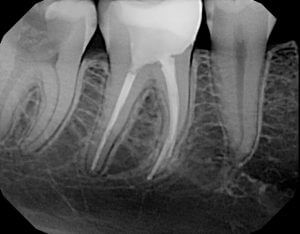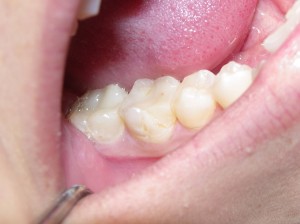Barrie dentistry: the dental diagnosis, or “What’s wrong with my teeth?”
Posted: September 16, 2013
Last Modified: June 6, 2022
Earlier, we outlined the four areas that any diagnosis performed by a dentist will generally fall under: periodontal (gums), dental (teeth – duh), functional (the bite and the joints, along with oral habits like grinding or clenching), and dentofacial (the aesthetics of the teeth/gums/lips all in relation to the face). We continue our series by addressing each of these separately. Today, we are talking about the dental diagnosis, and it is perhaps the easiest to understand as everyone has had some exposure to tooth issues.
If you can’t wait, and love to read about the dental care we offer in Barrie,
Link to the periodontal diagnosis is here,
Link to the functional diagnosis is here,
Link to the aesthetic diagnosis is here.
When we look at the teeth, we are concerned with the potential loss of teeth or parts of teeth. This can occur in one of three ways: dental caries (cavities, or your run-of-the-mill decay), fractures due to weakened teeth (such as those with large fillings or root canals), and trauma (which is obviously unpredictable, and preventable really only with facial/dental protection).
When we are performing a dental diagnosis, we are really just going tooth by tooth and not looking at the overall alignment of teeth or how they meet the opposing teeth. These are some of the things we look for:
– caries (cavities) – self explanatory. We use direct vision, transillumination (shining a light through the teeth), a dental explorer (the “dental pick”, to the lay person), and x-rays to detect tooth decay.
– fillings or other restorations like dental crowns that are faulty – this can be outright broken pieces off of fillings, but more commonly we are looking for marginal breakdown (where the edges of fillings are breaking down and allowing bacterial microleakage into the teeth) or heavy marginal staining that may point us to areas where a bond is not sealing out bacteria. Faulty areas are at risk of decay.
– weakened teeth due to large fillings or root canals. These teeth are at risk of fracture due to hollowing out of the teeth. When we see these, we often recommend dental crowns or onlays to protect them from breaking. This is especially important for back teeth that have had root canals but no crowns, because you can pretty much bank on them breaking at some point.


– systemic conditions such as dry mouth or acid reflux/vomiting, and acidic oral conditions. When one loses the protection of normal saliva, the acids that cause decay are not appropriately neutralized. This often leads to a runaway situation where decay sets in pretty quickly, and unfortunately, everywhere (making it hard to repair, even if detected). Even if dry mouth or acid reflux is not present, a diet that is highly acidic or chronically sugar-laden (low or high amounts of sugar) will cause similar decay.
Once we have a dental diagnosis, we can also arrive at a risk assessment. A risk assessment is basically identifying the things that are threats to your teeth, and the likelihood that those things will cause tooth damage or tooth loss.
And finally, once we have the diagnosis, we can arrive at a dental treatment plan. Addressing the threats to the teeth is as simple as addressing them one at a time – this may be simple measures like small fillings, or it may involve more involved treatment like multiple crowns if many teeth are heavily filled/already fractured/aesthetically unacceptable. Of course, a dental diagnosis is never taken in isolation of the other three areas (periodontal, functional, and aesthetic). We make sure that we look at everything (and also what the patient`s preferences are) before providing definitive treatment.
Hope this helps clear some things up. If you have questions about your teeth, and you are in the Barrie area, please contact us! We’d love to be your dentist in Barrie.


